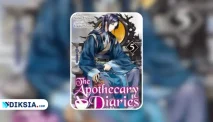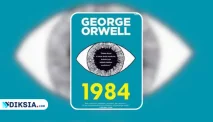Theme and Message
One Flew Over the Cuckoo’s Nest explores various themes that are relevant to the social and political context of the 1960s, such as:
Sanity and madness
The novel questions the definition and distinction between sanity and madness, as well as the criteria and methods used to diagnose and treat mental illness. It suggests that sanity and madness are relative concepts that depend on one’s perspective and situation, rather than objective realities that can be measured and categorized. It also suggests that some forms of madness can be seen as expressions of individuality and creativity, while some forms of sanity can be seen as manifestations of conformity and repression.
Freedom and oppression
The novel depicts the struggle between freedom and oppression, as represented by McMurphy and Nurse Ratched. It shows how freedom can be achieved by resisting and challenging the authority and rules that limit one’s potential and choices, while oppression can be imposed by manipulating and controlling one’s behavior and emotions. It also shows how freedom can be associated with risk and responsibility, while oppression can be associated with security and comfort.
Courage and cowardice
The novel examines the meaning and value of courage and cowardice, as demonstrated by the characters’ actions and reactions. It shows how courage can be expressed by standing up for oneself and others, by facing one’s fears and challenges, by taking risks and making sacrifices, while cowardice can be expressed by hiding from oneself and others, by avoiding one’s fears and challenges, by playing safe and making compromises. It also shows how courage can be inspired by love and friendship, while cowardice can be induced by hate and fear.
Life and death
The novel explores the significance and purpose of life and death, as experienced by the characters. It shows how life can be meaningful and joyful, or meaningless and miserable, depending on one’s attitude and actions. It also shows how death can be tragic and painful, or heroic and peaceful, depending on one’s circumstances and choices. It also shows how life and death can be intertwined, as some characters die physically but live on spiritually, while others live physically but die spiritually.
The novel conveys a message that is both optimistic and pessimistic, depending on one’s interpretation. On one hand, it celebrates the human spirit and its ability to overcome adversity and oppression, to find happiness and fulfillment, to create bonds of love and friendship.
On the other hand, it laments the human condition and its vulnerability to suffering and injustice, to loneliness and despair, to betrayal and violence. It also warns against the dangers of conformity and complacency, of ignorance and apathy, of power and corruption. It ultimately encourages the reader to think for oneself and to act according to one’s conscience and values, rather than to follow blindly and to obey unquestioningly.
Writing Style
One Flew Over the Cuckoo’s Nest is written in a first-person point of view, from the perspective of Chief Bromden. The novel uses a mixture of poetic and vernacular language, as well as various literary devices, such as:
- Imagery: The novel uses vivid and descriptive language to create pictures in the reader’s mind, such as the fog machine, the Combine, the fishing boat, the electroshock table, etc.
- Symbolism: The novel uses objects, characters, and events to represent abstract ideas or concepts, such as the control panel, the cuckoo’s nest, the World Series, the lobotomy, etc.
- Metaphor: The novel uses comparisons between two different things to illustrate a point or to create an effect, such as McMurphy as a Christ figure, Nurse Ratched as a machine, Chief Bromden as a giant, etc.
- Irony: The novel uses words or situations that have a different or opposite meaning from what is expected or intended, such as McMurphy’s fate, Billy Bibbit’s death, Nurse Ratched’s downfall, etc.
- Humor: The novel uses jokes, sarcasm, exaggeration, and absurdity to create amusement or to lighten the mood, such as McMurphy’s antics, Harding’s wit, Martini’s hallucinations, etc.
The novel also uses a non-linear and fragmented structure, as it switches between present and past events, between reality and fantasy, between clarity and confusion. The novel reflects Chief Bromden’s state of mind and perception of reality, which are influenced by his schizophrenia and by McMurphy’s presence.
Pros and Cons
One Flew Over the Cuckoo’s Nest is a book that has many pros and cons, depending on the reader’s preferences and expectations.
Some of the pros are:
- It is a classic novel that has influenced many other works of literature and art.
- It is a powerful and compelling story that engages the reader’s emotions and intellect.
- It is a rich and complex novel that explores various themes and issues that are relevant and timeless.
- It is a well-written and well-crafted novel that uses various literary techniques and devices to create an effective and unique style.
Some of the cons are:
- It is a controversial and challenging novel that may offend or disturb some readers with its content and message.
- It is a long and dense novel that may bore or confuse some readers with its structure and language.
- It is an outdated and biased novel that may reflect some stereotypes and prejudices of its time and context.
Comparison to Other Works
One Flew Over the Cuckoo’s Nest can be compared to other works of literature and art that share some similarities or differences with it. Some of these works are:
- Catch-22 by Joseph Heller: A satirical novel that depicts the absurdity and futility of war through the experiences of a group of American soldiers during World War II. It also features a rebellious protagonist who tries to escape from a system that is irrational and oppressive.
- The Bell Jar by Sylvia Plath: A semi-autobiographical novel that portrays the mental breakdown and suicide attempt of a young woman who suffers from depression and anxiety. It also explores the themes of identity, gender, and society through her experiences in New York and in a psychiatric hospital.
- One Flew Over the Cuckoo’s Nest (1975 film): A film adaptation of the novel directed by Milos Forman and starring Jack Nicholson as McMurphy and Louise Fletcher as Nurse Ratched. It won five Academy Awards, including Best Picture, Best Director, Best Actor, Best Actress, and Best Adapted Screenplay. It also differs from the novel in some aspects, such as the point of view, the ending, and some characters.
Where To Read Book
One Flew Over the Cuckoo’s Nest can be read in various formats and platforms. Some of these are:
- Paperback: The book can be purchased online or in bookstores in paperback format. The paperback edition has 272 pages and costs $9.99 on Amazon.com.
- E-book: The book can be downloaded online or in e-readers in e-book format. The e-book edition has 320 pages and costs $12.99 on Amazon.com.
- Audiobook: The book can be listened to online or in audio devices in audiobook format. The audiobook edition has 10 hours and 35 minutes of narration by John C. Reilly and costs $19.95 on Audible.com.
Conclusion
One Flew Over the Cuckoo’s Nest is a book that deserves its reputation as one of the greatest American novels of the 20th century. It is a book that offers a captivating story, memorable characters, profound themes, and remarkable style. It is a book that challenges the reader to think and feel, to question and reflect, to laugh and cry. It is a book that is worth reading and rereading, as it can offer different insights and experiences each time.






